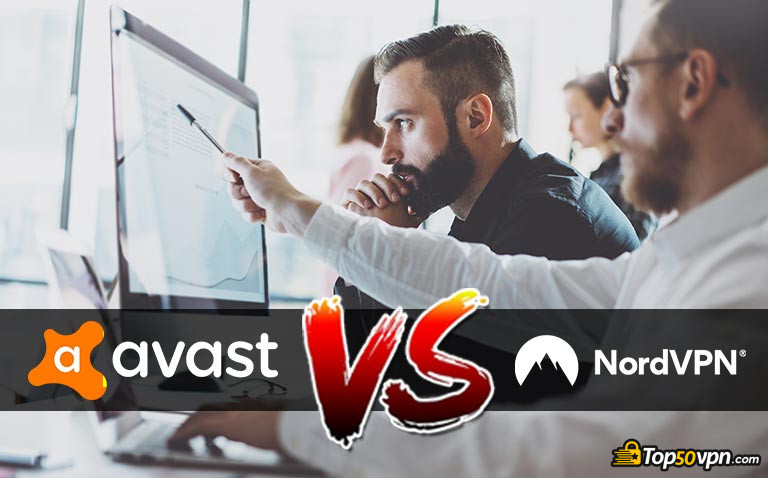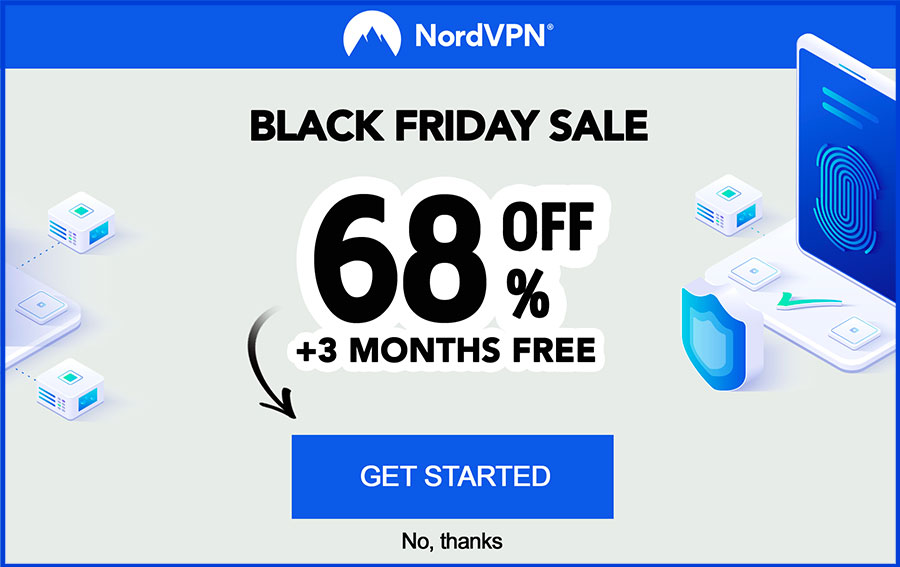
VPNs are often regarded as some of the best tools of preserving your online privacy and hiding your IP and other digital information from potential hackers and scammers. A somewhat popular trend nowadays, however, is to try and learn how to create a VPN of your own, instead of purchasing one of the top-tier tools of the industry.
Now look, I’m not going to lie - that’s a bad idea. It really is. Clientless VPNs are simply not worth it, for many different reasons. And I’ll use the chance of this tutorial to tell you about all of the main reasons for why that’s the case. However, if you’re truly adamant on learning how to make a VPN, I’ll tell you about that, first.
Let’s not jitter around any longer and get right to it.
What is important to keep in mind when creating your own VPN?
- If you don't understand the underlying technology and concepts that VPNs rely on, think about going for a mainstream VPN service instead of building one yourself. You can create a VPN that will 'work', but it's another thing to create a working and secure VPN on your own.
Table of Contents
How to Create a VPN
So - you’ve read about VPNs, you’ve figured out that they’re exactly what you need, and now you’ve decided that it’s better to learn how to create a VPN of your own instead of simply venturing out and finding a reliable and trustworthy tool to purchase.
Hey - at the end of the day, it’s up to you. Clientless VPN providers are a thing, sure, even though you’ll almost never read about them while browsing through and searching for the best VPN providers in the entire industry. However, whatever your reason for wanting to learn how to create a VPN is, that’s your call.

Whatever the case might be, I’m here to help you out. Below, you’ll find a really simple step-by-step guide on how to set up my own VPN. I’ve compacted the information as much as possible, just so you could get right to it without having to scroll down a sea of unrelated content and random comments.
That being said, after you’re done reading and figuring out how to make a VPN, I highly advise you to take a look at some of the reasons why this is a bad idea below the guide. I promise I’m not going to waste your time with random “fun facts”, and will only focus on important notes of interest.
Note that this guide is aimed at Windows 10 users. All of the processes described below reflect how to create a VPN on Windows 10 - while users with older versions of Windows can follow along since their processes are going to look similar, things are going to be a bit different for Mac users.
Step 1: Go to Your VPN Settings
Yup - in Windows 10, there’s a special tab dedicated for VPN connections in your settings. That’s pretty cool indeed.
You could access this tab by typing “VPN” in your search bar (that’s the easiest way to do it), or simply go to your system settings and navigate to where the VPN tab is there (it should be in your “Network and Internet” tab).
Latest NordVPN Coupon Found:
GET 63% OFF
+ 3 Months Free
Looking for ways to secure yourself online? What if we told you that you can get the top VPN on the market for way less - grab NordVPN 60% discount now & get 3 months FREE!
Step 2: Add a VPN Connection
After you’re in the right place, choose to add a virtual private network (that’s literally what a VPN is) and you’ll have a screen with some empty slots to fill pop up in front of you. Now, if you’re interested in learning how to create a VPN, this is the place to be.
Here, you’ll need to set a connection name, server name or address, type of the VPN and sign-in information. Always make sure to toggle the option at the top of the screen as a “Windows built-in” VPN. This will automatically set some things up for you, since it’s exactly the connection that you’re looking for.
In the connection name and address sections, you’ll have to fill out some information about your VPN provider. This can be done by figuring out what your system supports - whether it’s a third-party company or some integrated VPN service.
In the username and password section, you’ll have to refer to your VPN provider once again. While you’ll be able to choose some settings, this information should be provided by the company which services you are using.

Did you know?
Have you ever wondered which VPNs are the best for your security & privacy?
See & compare TOP VPNs side by sideStep 3: Connect to Your VPN
Following all of the instructions above and filling out all of the necessary information, you should now find a new WiFI connection in your network connections list at the bottom of your screen. Assuming everything went smoothly, you should be able to connect to your newly-crafter VPN without a big problem.
Admittedly, this will go smoother with some of the more advanced clientless VPN providers. It depends on some of the protocols that they’re using, and whether or not there’s support for people who want to find out how to create your own VPN, in the first place.

Note, though, that there are some things that you’ll need to do before actually going out and learning how to create a VPN. The most notable - of course - is going to be choosing a clientless VPN provider, and utilizing the services of Microsoft’s built-in VPN service.
I’m not going to get into talking about clientless VPNs, though. Why? Well, I do not have any recommendations or any good things to say about these services - let me tell you why.
Why Making a VPN of Your Own Might Not be the Best Idea
I’ll admit it - some VPNs are better than others. That’s pretty obvious, right? Well, let me be the first one to say this - clientless VPNs are probably at the bottom of the list.
Now, before you throw stones at me, let me list some reasons for why you should learn how to create a VPN - sure -, but then go for one of the better VPNs of the industry.
Security Concerns
At the top of the list - naturally - is security. Clientless VPNs (or self-made VPNs) are often regarded as those having the worst security features.
You might say - well, at least I’ll be able to rest assured that they won’t log my data!
To that I say - not necessarily.
While data logging is definitely a prominent issue in the VPN community worldwide, it’s almost exclusively so with the lower-tier VPNs. Whenever we’re talking about the top-dogs, you should always keep in mind that they are going to be safe and disclose any and all logging practices. After all, they wouldn’t have made it to the top if they were to blatantly log user data, right?

The best VPNs are also going to have well-configured and optimized security features within their clients - something that you won’t really easily learn about while studying how to create a VPN. You see, while some clientless VPNs do have better protocols or encryption systems that others, there’s one big issue that binds them all.
The lack of optimization.
Not only will you lack the ability to toggle some of the key security features on your self-made VPN (kill switch, AES configurations, OpenVPN protocol settings), chances are that you’ll be learning “how to set up my own VPN” without even knowing that your VPN won’t have some of those features, altogether.
If you want to feel safe and be truly anonymous online, you should always trust the best VPN providers out there. Utilizing the services of some shady, clientless VPN provider isn’t really the best way to go about it.
No UI / Bad UX
UI stands for “user interface”, while UX is “user experience”. You can probably see where this is going, right?
While it may seem comfortable at first - only having to connect to your VPN by jumping to a separate connection at the bottom of your screen -, you’ll soon learn that lacking complete customization options for your VPN is actually really, really bad.
Whether it be server hoping, protocol setting check-ups or simply trying to gather some basic information about the performance of your VPN, the process becomes a whole lot more difficult without there really being a solid reason for why that should be the case.

Also, there’s a practical issue with this, too.
Imagine that you’re using a VPN for a few different reasons. Say, content streaming and file torrenting. Now, using a normal VPN without learning how to create a VPN of your own, all that you would need to do is simply hop from one server on to the other - from a server that supports content streaming to one that’ has better protection and speed for torrenting.
That’s literally just a single click of a button.
However, if you do choose to go the route of learning how to create your own VPN, this isn’t going to be an option - while there might not even be a solid number of servers in of itself, hopping between ones that exist would be a whole different debacle.
The “Price VS Quality” Debate
Admittedly, one of the main reasons why people opt to learn how to create a VPN is the price of many VPN providers out there.
Pricing can be tricky - especially if you don’t really want to spend money on a virtual program. However, I would advise you to think about it this way:
Using a VPN (if it’s a proper VPN, that is) guarantees the preservation of your online privacy. With your IP hidden and your sensitive browsing information encrypted, there’s almost no way that a hacker (or anyone else, for that matter) would be able to reach it.
| NORDVPN | EXPRESSVPN | PRIVATEVPN | |
| 30 Days | 30 Days | 30 Days | |
| $2.99 | $8.32 | $3.82 | |
| 4 | 3 | 3 | |
| All NordVPN Coupons | All ExpressVPN Coupons | All PrivateVPN Coupons | |
| Visit site Read review | Visit site Read review | Visit site Read review |
|---|
Table: Pricing options for some of the best VPNs out there
While some VPN providers can charge a pretty hefty sum for their products, most of the time, you’ll find that the prices really aren’t as bad as you might think. Take NordVPN as an example - one of the best VPN providers in the entire industry, a true giant that has built a solid reputation of being super-safe and offering users many different features.

The pricing plans for Nord, however, are simply amazing.
Given these prices, there is absolutely no need to learn how to create a VPN and then further delve into the topic of “how to set up my own VPN” - it’s simply not worth it.
Closing Statement
Hey - don’t get me wrong. Learning how to create a VPN definitely has its advantages.
Honestly, I would probably advise everyone who wants to use such a tool to figure out how to make a VPN on their own. It’s some great technical knowledge, and after reading a few in-depth guides, you’ll be able to understand the processes that go into each and every VPN out there.
However, my support for clientless, self-made VPNs ends at the educational level.
While I don’t have anything against the concept itself, it has been proven to be a lousy solution for online security time and time again. With the VPN industry now stronger than ever before, there are so many different choices that you could make, and so many various features that you could utilize.
While learning how to make a VPN definitely isn’t a waste of time, always consider reading some reviews of the best VPN providers of the year before making up your mind on whether or not creating a VPN of your own is a good idea.
Conclusions
While it can seem very easy to learn how to create your own VPN from scratch, there are certain intricacies around it, still. For starters, you need to find a proper VPN service, read up on protocols (what to use and what to avoid), figure out some integration and usability subtleties, and so on. In this tutorial, I’ve only spoken about the technical process of how to make a VPN on Windows 10.
Whether you need a VPN for security, IP protection or simply to watch your favorite show on Netflix or Hulu, I would still always advise you to avoid doing all of the work yourself, and simply invest a couple of dollars every month in a tool that’ll give you a peace of mind for the time to come.
If you’re interested in finding a proper, worthwhile VPN, but don’t really know where to look, you could always check out our list of the best VPN providers around. Cheers, and best of luck in preserving your online security and anonymity!
Contributed by: John Watkins , vCIO at Capital Business Systems
John is vCIO at Capital Business Systems - a large IT provider in the Midwest - as well as an accomplished MSP prof...
Read Full Bio...Leave your honest feedback
By leaving your honest opinion you can help thousands of readers to choose the best VPN. We accept genuine & helpful user feedback, either positive or negative. Have in mind that biased feedback will not be published. If you want to share your opinion, experience or advice, we want you to spill the beans!














